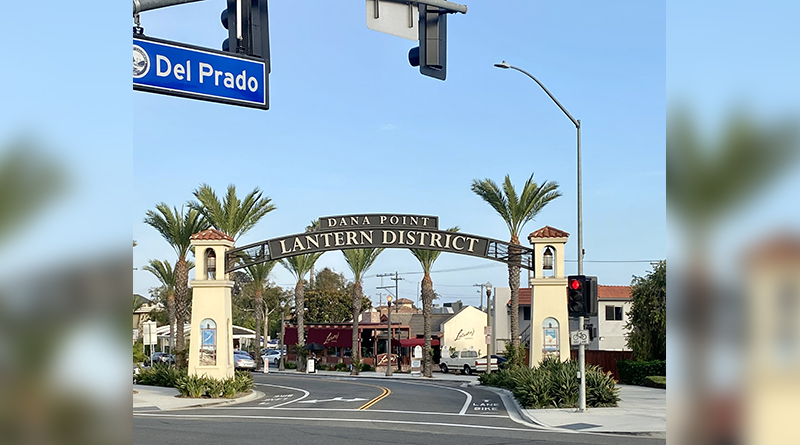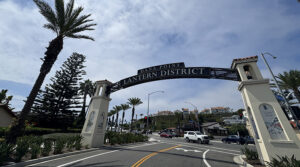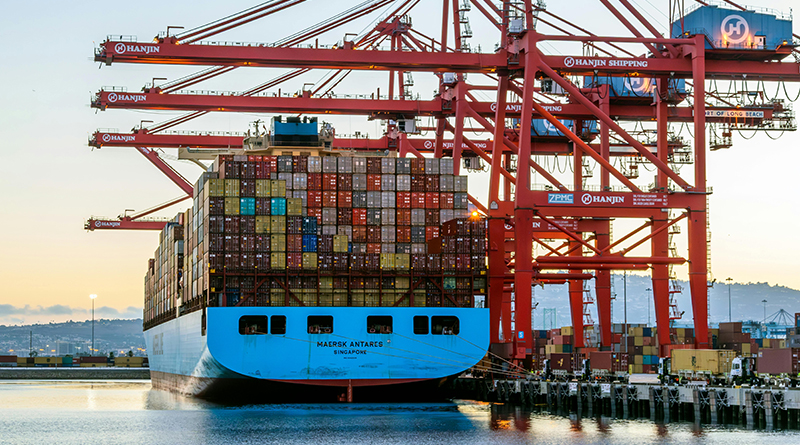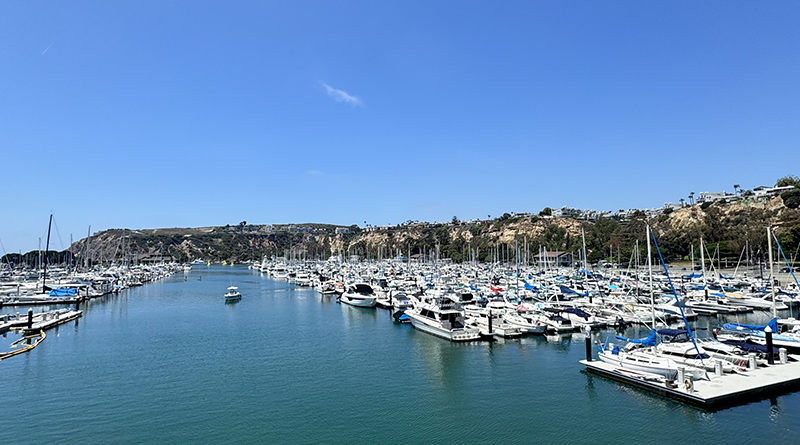Dana Point’s identity has always been tied to the sea, but some of its most enduring symbols aren’t ships or sails — they’re lanterns. These iconic fixtures, first installed nearly a century ago, once lined the streets and later became the namesakes of the harbor’s neighborhoods. Today, they’re finding new life in the revitalized marina, bridging the city’s history with its future.
The original lanterns date back to the 1920s, when a widow named Anna Walters, a Realtor from Laguna Beach, began selling lots in what was then a new coastal development. Walters is credited with naming many of the streets, giving them nautical flair with titles such as Street of the Golden Lantern, Blue Lantern, and Green Lantern. Historians believe the theme may have been inspired by the legacy of tall ships mooring off the point, with their signal lights cutting through the night.
The lampposts themselves were installed soon after, when developer S. H. Woodruff purchased 1,300 acres and set about paving streets, adding underground utilities, and lining the roads with lantern-style streetlights. Some accounts describe colored glass domes that matched the street names — green domes for Green Lantern, blue for Blue Lantern, and so on. A 1927 Los Angeles Times article painted a vivid picture of “beautiful ship’s lanterns in various colors” lighting the Roosevelt Highway, now Pacific Coast Highway.
The Great Depression stalled Woodruff’s grand plans, and although the lanterns remained in operation through the 1940s, they eventually fell into disrepair. Viewed as outdated eyesores rather than historic treasures, they were removed and sold for scrap. More than 150 lanterns were lost, but a handful survived — some on private property, others tucked away in basements or collections.
Today, only five original lampposts remain standing in the city, three of them still topped with their lanterns. Fifteen more lanterns were restored and placed on modern poles in the Dana Point Plaza in 1989 after spending decades in local resident Marjorie Kinkaid’s basement. The Dana Point Historical Society has made it a mission to preserve what’s left, collecting artifacts and telling their story. “It’s a piece of our history,” said Carlos Olvera, the society’s president. “Dana Point is a relatively new community… if you don’t save it now, how will it ever become old?”
Some lanterns have been saved by chance. One was rescued from a Dumpster outside a Laguna Beach restaurant; others were purchased from the county by residents and reinstalled in their yards. Each survivor is a link to the city’s early years, a reminder of its ambitious beginnings.
That connection to history is now reflected in the Dana Point Harbor revitalization project. As part of the $475 million modernization, Bellingham Marine and Bellwether Financial Group have introduced a “lantern” theme to the new docks. Each dock is named for a different lantern color, and twice a day, the dock lights glow in their assigned hue for 15 minutes. From the water or from vantage points like the Charthouse, onlookers can watch the harbor transform into a spectrum of colors at sunset.
“One of the things that we wanted to do today is unveil a concept that is truly Dana Point, and I think it’s going to be a signature part of this marina,” said Joe Ueberroth, founder and president of Bellwether Financial Group. “It’s going to tie the landside into the waterside.”
Boaters like Kevin and Hydee Riggs, longtime harbor users, say the theme gives the new marina a local touch. “The new docks are beautiful… we like the ‘local feeling’ of the lantern-themed docks,” said Hydee. “We’re ready for our docks.”
The lantern-themed docks are part of a broader vision to blend history with modern amenities. Phases one and two of the marina’s reconstruction are now complete and fully occupied, with phase three nearing completion. By year’s end, Ueberroth expects 25% of the harbor revitalization to be finished.
From the few surviving streetlamps of the 1920s to the glowing colors on modern harbor docks, Dana Point’s lanterns have evolved from practical infrastructure to cherished symbols. They’re part of the city’s story—a reminder of its roots, a beacon for its boating community, and now, a nightly spectacle connecting the past to the present along the waterfront.






